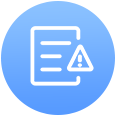ENGR90033课程作业辅导:实习生的学习经历
2021-11-08 17:04 来源:留学在线 阅读量:59
NGR90033 – Internship: Student Guide
10 Task 4 – Final Report
The Final Report is a detailed analysis of the learning experience that has been your internship. It will
explain your role in the host organisation, what has been accomplished, and what has been have learnt.
10.1 Length, submission and marks
• The Final Report must be no more than 8000 words in total. The Final Report should consist of the
following:
o An executive summary (maximum 400 words)
o The body of the report – the introduction to the conclusion, inclusive (maximum 5000
words)
o The appendices
It is expected that most students will write around 4000 words for the body of the report.
o It is expected that students will typically spend approximately 25 hours on the report to
achieve a passing mark.
• The Final Report is to be submitted using Turnitin through the subject LMS site.
• The Final Report is worth 50% of the subject mark.
• The Final Report will receive a mark out of 100.
10.2 Audience
Your Final Report will only be read by the Melbourne School of Engineering academic and coordination
staff. This will allow you to fully express yourself in relation to your personal and professional
development. Information reported in your Final Report will not be shared with your employer or student
peers.
10.3 Description
Your internship has been a rare opportunity to experience the industry environment while still studying.
Within this environment you have been given responsibilities, performed work to benefit others and
interacted with a wide range of people. The Final Report is a deep reflection on this experience. If done
properly you will better understand what you have learnt and can use this learning in the future,
particularly when you begin seeking graduate employment.
The objective of your report is to inform your reader:
• about the environment you worked in and the role that you held;
• how the communication and teamwork requirements differ between an industry environment and
a university environment;
• how you applied your university learning; and
• how you developed your communication and other professional skills.
Your report is expected to be a demonstration of your written communication capability. It should be clear,
concise, focused and informative.
10.3.1 Appendices – Engagement Reports
The Engagement Reports do not have to be included in your appendices. These should only be included if
they are referred to by the main body of your report.
ENGR90033 – Internship: Student Guide
Melbourne School of Engineering Date:7/03/2024, Version: 1.01
The University of Melbourne Victoria 3010 Australia Page 31 of 44
W: www.eng.unimelb.edu.au
10.3.2 Template
A template is available for you to use and is accessible on the LMS:
Final Report Template.docx
It is not compulsory for you to use the template, but it is highly recommended as you must include the
described information in an easily accessible format.
10.4 Assessment
10.4.1 Assessment criteria
Criteria Outline of what is sought
Role
(20%)
A clear explanation of the following and how they interrelate:
1. Your role and how it fitted within your team and management structure.
2. How the organization’s structure or structures differ to those in your university
environment and the significance of this.
3. The tasks you were engaged in and your associated achievements.
4. The impact of the work you were involved in, in relation to both your host
organization and other stakeholders.
5. The quality, information and other management systems used in your host
organization, why they were used and how they impacted the work that you
did.
6. The sources of information you used to complete your work within your host
organisation, how they were sourced and your confidence in them.
Knowledge and
Methods
(20%)
A clear explanation of the key skills, knowledge and methods that you have used to do
the following:
1. Solve complex technical problems set within broad contextual constraints.
2. Conduct and manage technical projects3
.
As well as an explanation of:
3. How you have applied and developed these skills.
4. What related skills you will need to develop before becoming an effective
practicing engineer
This criterion directly relates to the EA competencies associated with Engineering
Application Ability (2.1, 2.3 & 2.4) and the related C&IS graduate attributes.
3 These may be “projects” of any size, typically for interns these will range from individual tasks assigned to you, to
small team projects. Conducting and managing may involve multiple tasks.
ENGR90033 – Internship: Student Guide
Melbourne School of Engineering Date:7/03/2024, Version: 1.01
The University of Melbourne Victoria 3010 Australia Page 32 of 44
W: www.eng.unimelb.edu.au
Criteria Outline of what is sought
Professional
Skills
(25%)
A clear explanation of the professional skills and personal attributes that you have used
and experienced, required to:
1. Operate in a team environment.
2. Communicate effectively within an industry context.
3. Effectively work with clients/stakeholders.
As well as an explanation of:
4. How you have applied and developed these skills.
5. How the application of these skills impacts engineering work.
6. What related skills you will need to develop before becoming an effective
practicing engineer.
7. Observed behaviours and actions that impacted on your team’s ability to be
successful and the related longer-term impacts on projects.
This section directly relates to the EA competencies associated with Professional and
Personal Attributes and the related C&IS graduate attributes
Structure and
Readability
(30%)
The Final Report should be:
• logical and cohesive;
• clear of objective with a strong narrative;
• concise and complete;
• easily understood; and
• easily navigated.
Figures and tables should be used where they aid understanding.
Executive
Summary
(5%)
The Executive Summary should offer a succinct overview of the report. It should
summarise your objective, your conclusion and the key points of your report.
ENGR90033 – Internship: Student Guide
Melbourne School of Engineering Date:7/03/2024, Version: 1.01
The University of Melbourne Victoria 3010 Australia Page 33 of 44
W: www.eng.unimelb.edu.au
10.4.2 Assessment rubric
POOR (0–49%) PASS (50–59%) GOOD (60 – 69%) EXCELLENT (70 – 89%) OUTSTANDING (90 – 100%)
Role (20%)
Addresses the Role criterion
items in a superficial and
disparate way with no significant
interconnectedness.
Addresses all of the Role
criterion items, with
reasonable detail on the
descriptive components such
as role and tasks but with
little insight on the impact
and context ones. Some
interconnectedness identified.
Addresses all of the Role criterion
items with some detail and insight.
How the items interconnect with each
other is discussed in a basic but useful
way. Reasonable examples are used to
illustrate points.
As “Good” with a strong
understanding of how the
items interconnect and impact
on each other. Responses to
impact and rationale show
good insight. Examples are
detailed and useful.
As “Excellent” with deep
connections to the
student’s personal
internship experience.
Examples are well
thought out and explored
in detail demonstrating
good insight.
Knowledge and Methods (20%)
Skills, knowledge and methods
are identified in a superficial
manner, with limited discussion
of application and development.
Skills, knowledge and
methods are discussed in a
general way with some detail.
Application and development
are addressed but lack insight
with only basic examples.
Skills, knowledge and methods are
discussed in a specific and detailed
way. Application and development are
addressed in detail with reasonable
examples. The links between skills,
knowledge, methods, application and
development are explored. Reasonable
understanding of EA competencies/CIS
grad. attributes is demonstrated.
As “Good” with good examples,
a strong understanding of
personal development required
and detailed references to past
study and learning. Good
understanding of EA
competencies/CIS grad.
attributes is demonstrated.
As “Excellent” with good
insight into the links
between skills,
knowledge, methods,
application and
development. Response
is closely linked to
student’s personal
internship experience.
Professional Skills (25%)
Skills and attributes are
identified in a superficial
manner, with limited discussion
of application, impact and
development.
Skills and attributes are
discussed in a general way
with some detail. Application,
impact and development are
addressed but lack insight
with only basic examples.
Limited observation
demonstrated.
Skills and attributes are discussed in a
specific and detailed way. Application,
impact and development are
addressed in detail with reasonable
examples. The links between skills,
attributes, application, impact and
development are explored.
Observations are reasonable.
Reasonable understanding of EA
competencies/CIS grad. attributes is
demonstrated.
As “Good” with strong
examples and good insight into
the impact of professional
skills. Understanding of
personal development
requirements is good.
Observations demonstrate
insight. Good understanding of
EA competencies/CIS grad.
attributes is demonstrated.
As “Excellent” with good
insight into the links
between skills, attributes,
impact, application and
development. Response
is closely linked to
student’s personal
internship experience.
ENGR90033 – Internship: Student Guide
Melbourne School of Engineering Date:7/03/2024, Version: 1.01
The University of Melbourne Victoria 3010 Australia Page 34 of 44
W: www.eng.unimelb.edu.au
POOR (0–49%) PASS (50–59%) GOOD (60 – 69%) EXCELLENT (70 – 89%) OUTSTANDING (90 – 100%)
Structure and Readability (30%)
Ideas are not connected
(coherence) and content flows
poorly (cohesion). May be largely
written in a question and answer
form. Objective of the document
is unclear. Redundant and
repeated content, while key
information is absent.
May have multiple problems
with grammar, spelling and
expression. Difficult to navigate
due to missing elements or poor
headings.
No figures/tables used,
inappropriate, poorly designed
or poorly explained.
Reasonable coherence and
cohesion. Flows like a report.
Objective is clear but may not
be fully achieved or properly
aligned with task. Some
redundancy may be present
or required information
missing.
Few grammatical, spelling and
expression mistakes. Headings
are reasonable and navigation
elements are present.
Figures/tables are generally
included where useful, with
reasonable design and basic
explanations.
Referencing generally used
where required.
Good coherence and cohesion.
Objective is clear, achieved and
appropriate. Minimal redundancy and
all key information is provided.
Included appendices are referred to
and useful.
Minimal grammatical, spelling and
expression mistakes. Evidence of proof
reading.
Good clear headings with all navigation
elements present (page #, Table of
Contents).
Figures/tables are used where helpful,
and are generally well designed, well
explained, and appropriate.
Referencing used as required.
As “Good” with excellent
coherence and cohesion,
maintaining a strong narrative
throughout the document.
Content is well thought out;
clearly and concisely achieving
the report’s objective.
Strong evidence of repeated
review, with negligible mistakes
in grammar, spelling and
expression.
Overall presentation is at a
professional standard.
Figures/tables used are of an
excellent standard and closely
linked to content.
Figures/tables are used in all
key areas where they would aid
understanding.
As “Excellent” with all
elements coming
together to make the
document clear,
interesting and enjoyable
to read.
Standard is equivalent of
a professional report that
has been carefully and
repeatedly reviewed.
Exec. Summary (5%)
Executive summary is missing
key information such as the
conclusion or objective.
Executive summary
summarises most of the key
points but contains significant
unnecessary content.
Maximum mark if executive
summary word limit
exceeded.
Executive summary addresses all the
key points but may contain some
unnecessary content.
Executive summary provides a
mostly clear summary of the
key content without containing
unnecessary content.
Executive summary
provides a complete,
clear and concise
overview of the report.
ENGR90033 – Internship: Student Guide
Melbourne School of Engineering Date:7/03/2024, Version: 1.01
The University of Melbourne Victoria 3010 Australia Page 35 of 44
W: www.eng.unimelb.edu.au
10.4.3 Assessment penalties
The following penalties are applicable to the Final Report. The minimum mark is 0.
1. Submission requirements
a. Incorrect file format = -10 marks
b. Missing fields on the cover sheet = -5 marks
c. Missing cover sheet = -10 marks
d. Main body over 5000 words = Only first 5000 words assessed and -10 marks
e. Submission over 8000 words = Only first 8000 words assessed and -10 marks (-5 marks if
main body is also over 5000 words)
f. Executive summary over 400 words = Maximum limit on mark for Executive Summary
criterion
g. Late = -10 marks per day for up to 5 days after which the submission will not be accepted
"留学在线"的新闻页面文章、图片、音频、视频等稿件均为自媒体人、第三方机构发布或转载。如稿件涉及版权等问题,请与
我们联系删除或处理,客服邮箱756005163@qq.com,稿件内容仅为传递更多信息之目的,不代表本网观点,亦不代表本网站赞同
其观点或证实其内容的真实性。
最新文章
- 卧龙岗大学全球排名第几
留学问答 · 2024-03-06
- 卧龙岗大学全球排名第几
留学问答 · 2024-03-06
- 卧龙岗大学全球排名第几
留学问答 · 2024-03-06
- 卧龙岗大学全球排名第几
留学问答 · 2024-03-06
- 墨尔本皇家理工大学全球排名第几
留学问答 · 2024-02-29








